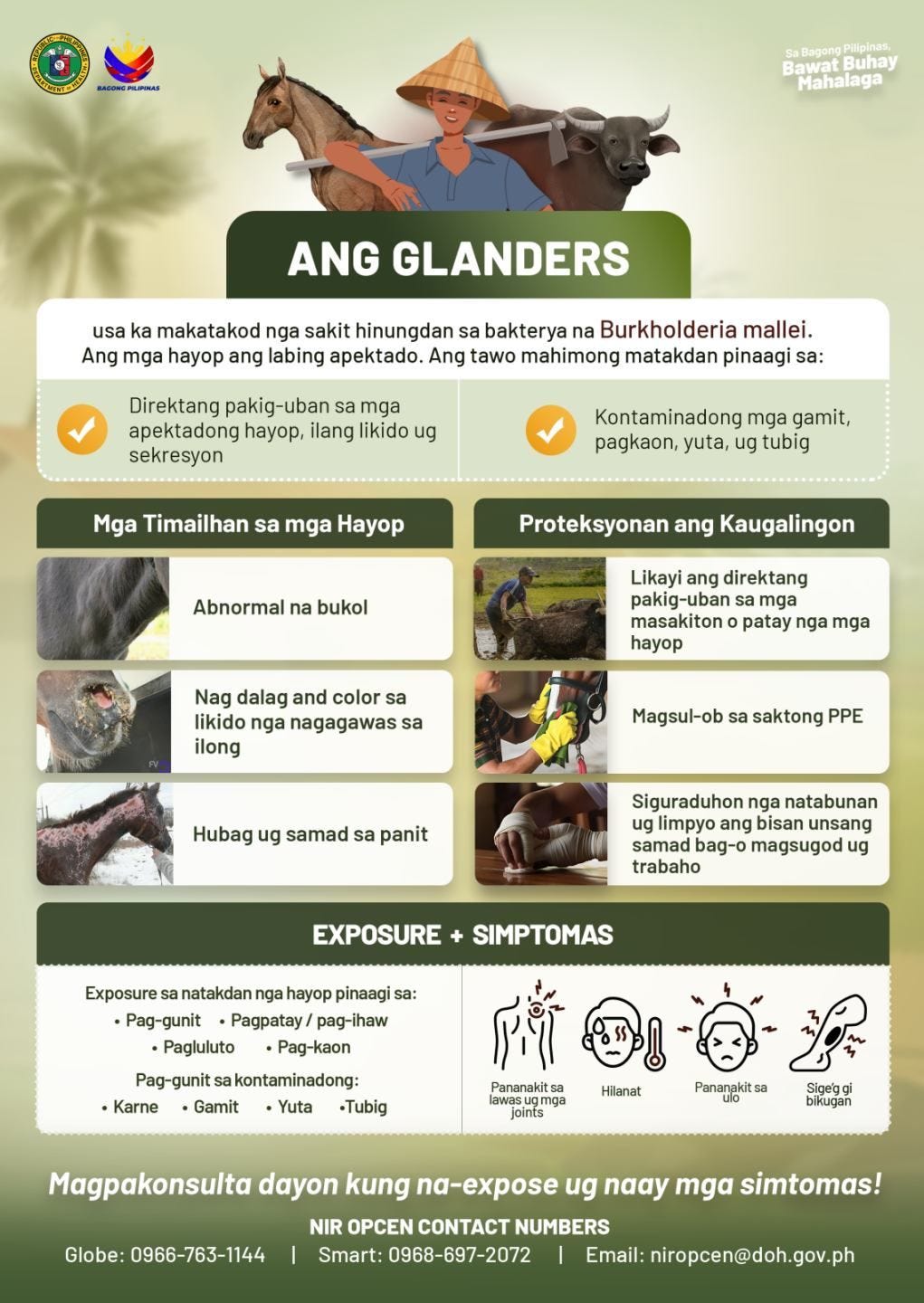The Department of Health Negros Island Region Center for Health Development in the Philippines (DOH-NIR) reported on the confirmation of two individuals have died of glanders in the province of Siquijor.
Both fatalities were male and had been confined at a hospital in Negros Oriental. They also had comorbidities such as hypertension and diabetes.
The DOH has discouraged direct contact with animals and consumption of meat and meat products from sick animals.
DOH-NIR continues their surveillance, contact tracing, and community based health education with medical teams are conducting community visits to monitor and detect early signs, while animal surveillance and testing is being led by the Department of Agriculture.
Glanders is a disease caused by the bacteria, Burkholderia mallei. Glanders mostly occurs in horses, mules and donkeys. In the Philippines, you can include the carabao. Humans can get the disease, but it is rare.
Glanders can occur as the following infections:
Local infection of skin (cutaneous) or mucous membranes (upper respiratory)
Pulmonary infection (lungs)
Septicemic form (bloodstream)
Most cases of glanders do not result in death unless the infection spreads to the bloodstream. In those cases, the person will usually die within seven to 10 days.
Because human cases of glanders are rare, there is little information about the effectiveness of antibiotic treatment. There is no vaccine for glanders.
Related news:
Philippines: 𝗗𝗲𝗻𝗴𝘂𝗲 𝗖𝗮𝘀𝗲𝘀 𝗶𝗻 𝗜𝗹𝗼𝗶𝗹𝗼 𝗥𝗲𝗺𝗮𝗶𝗻 𝗔𝗯𝗼𝘃𝗲 𝗢𝘂𝘁𝗯𝗿𝗲𝗮𝗸 𝗧𝗵𝗿𝗲𝘀𝗵𝗼𝗹𝗱
Philippines: 1st mpox case reported in Zamboanga Sibugay, Rise reported in Mindanao
Philippines: H5N9 avian influenza reported for the first time






